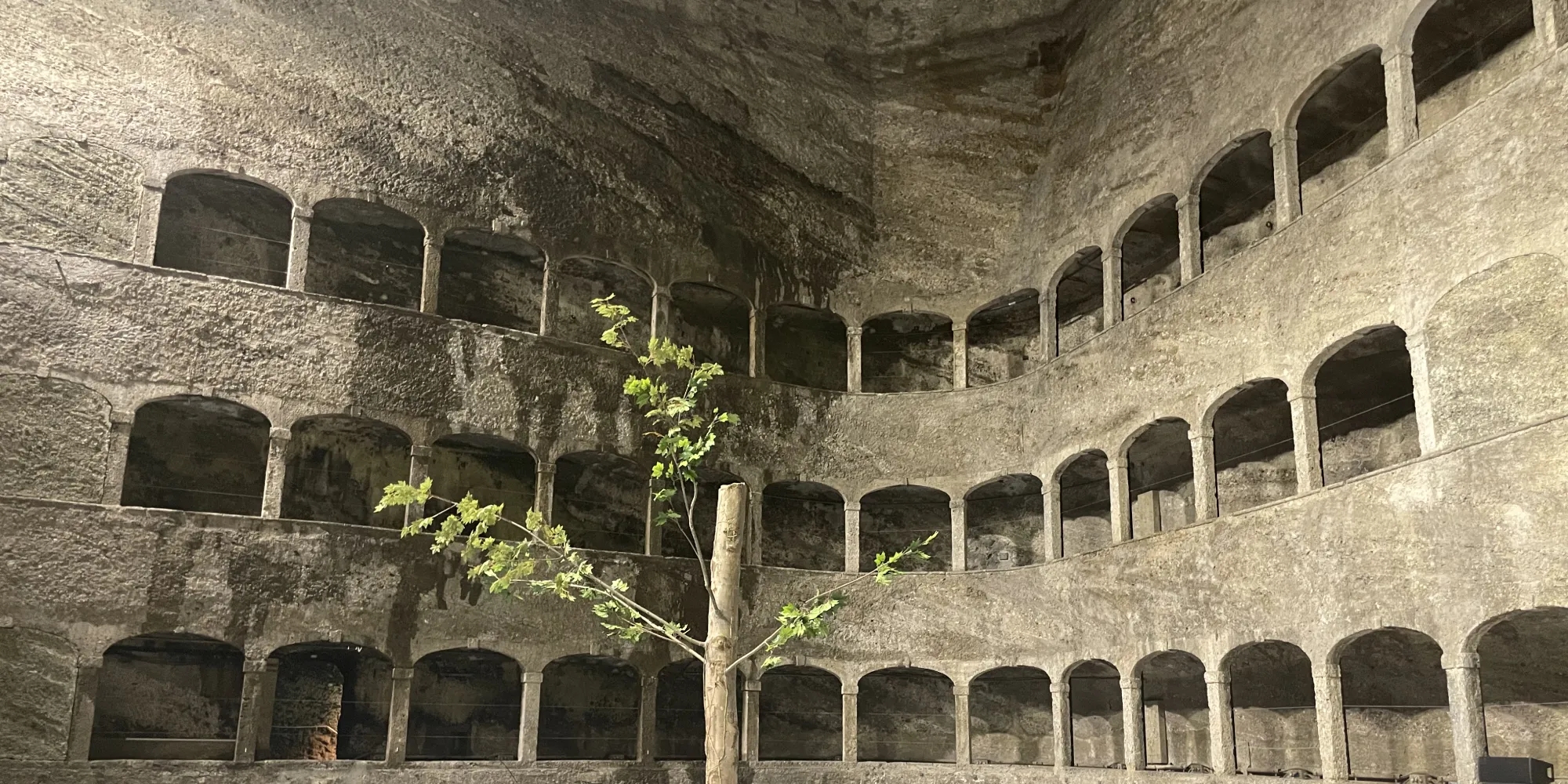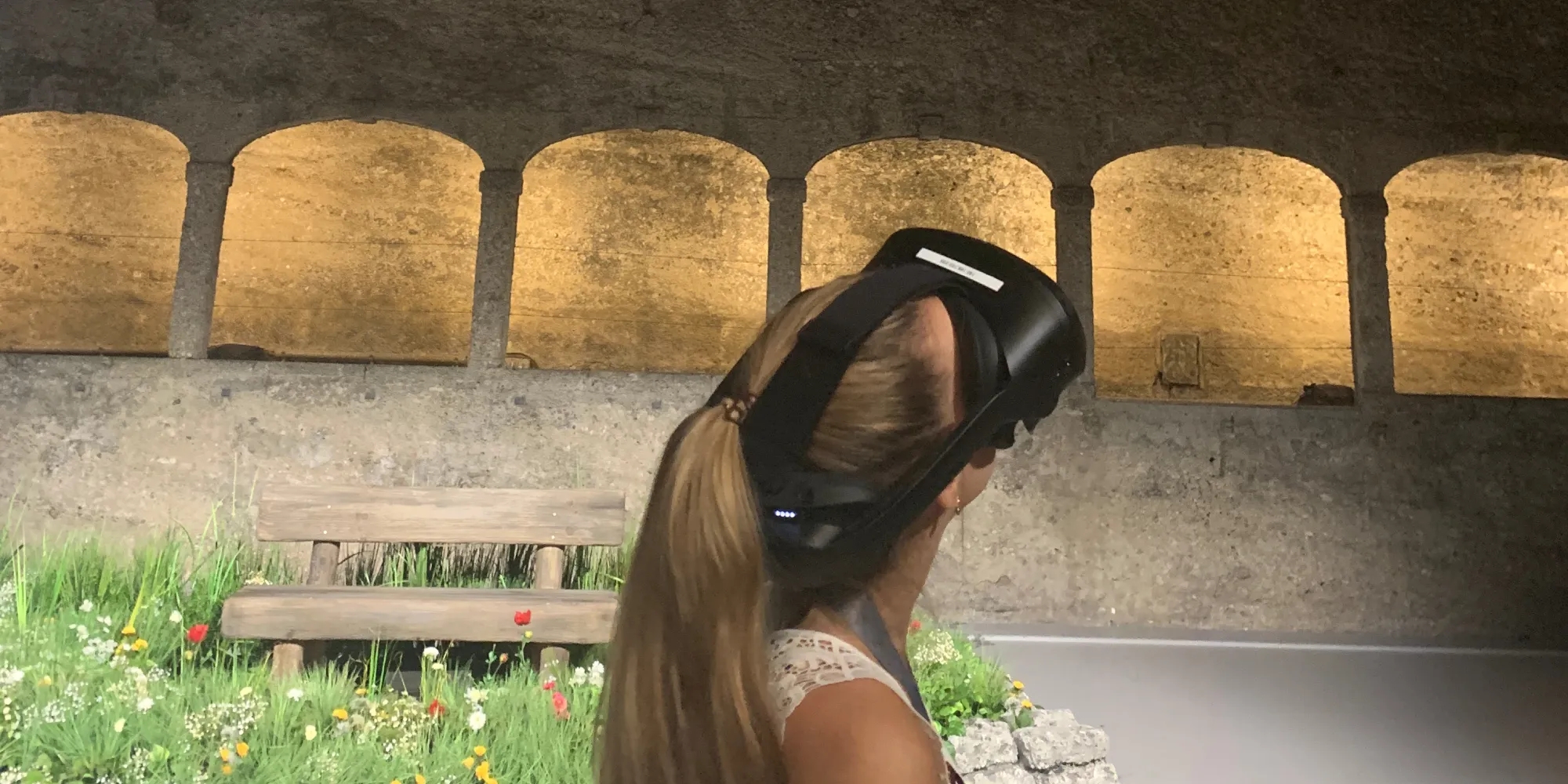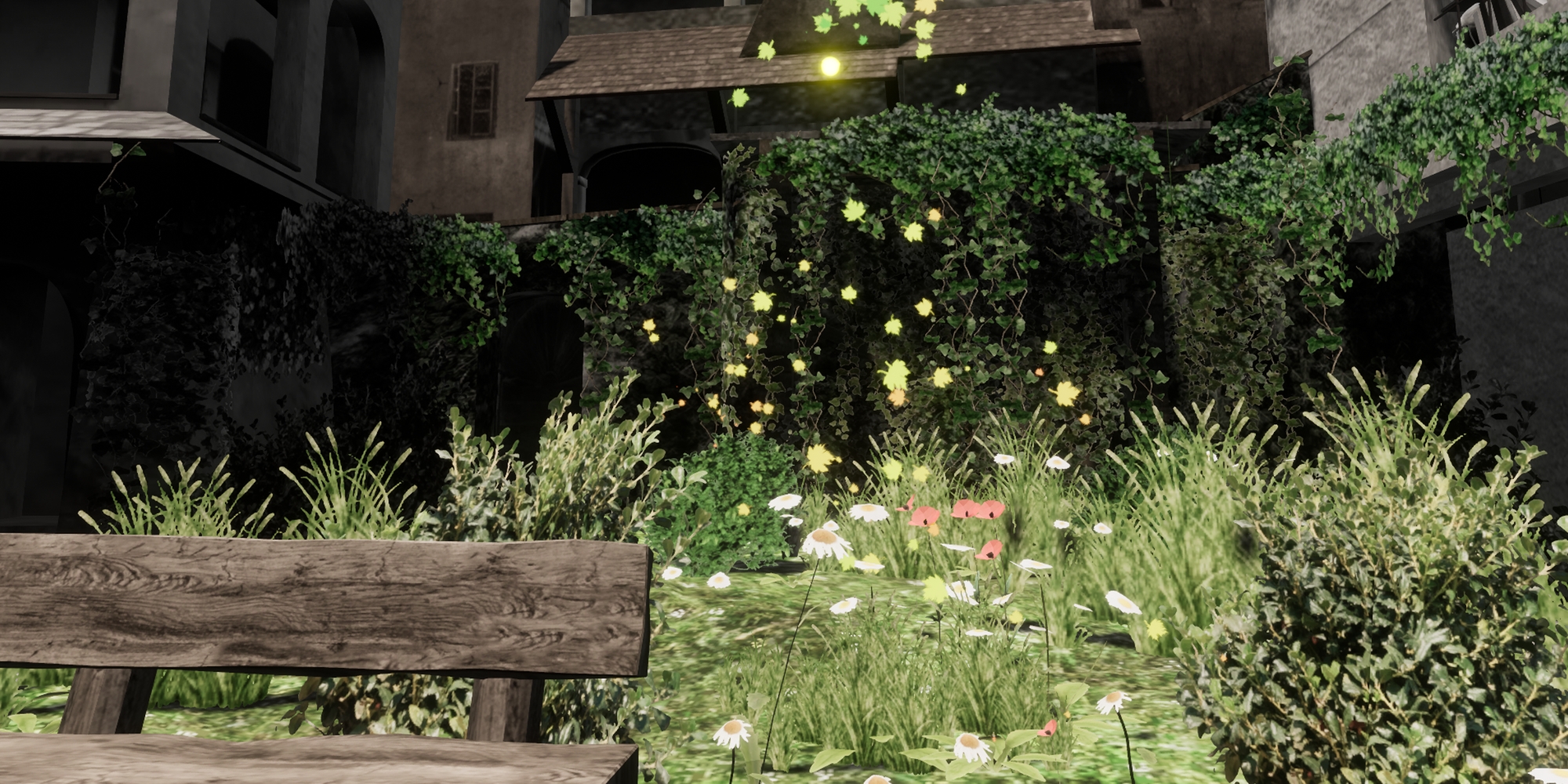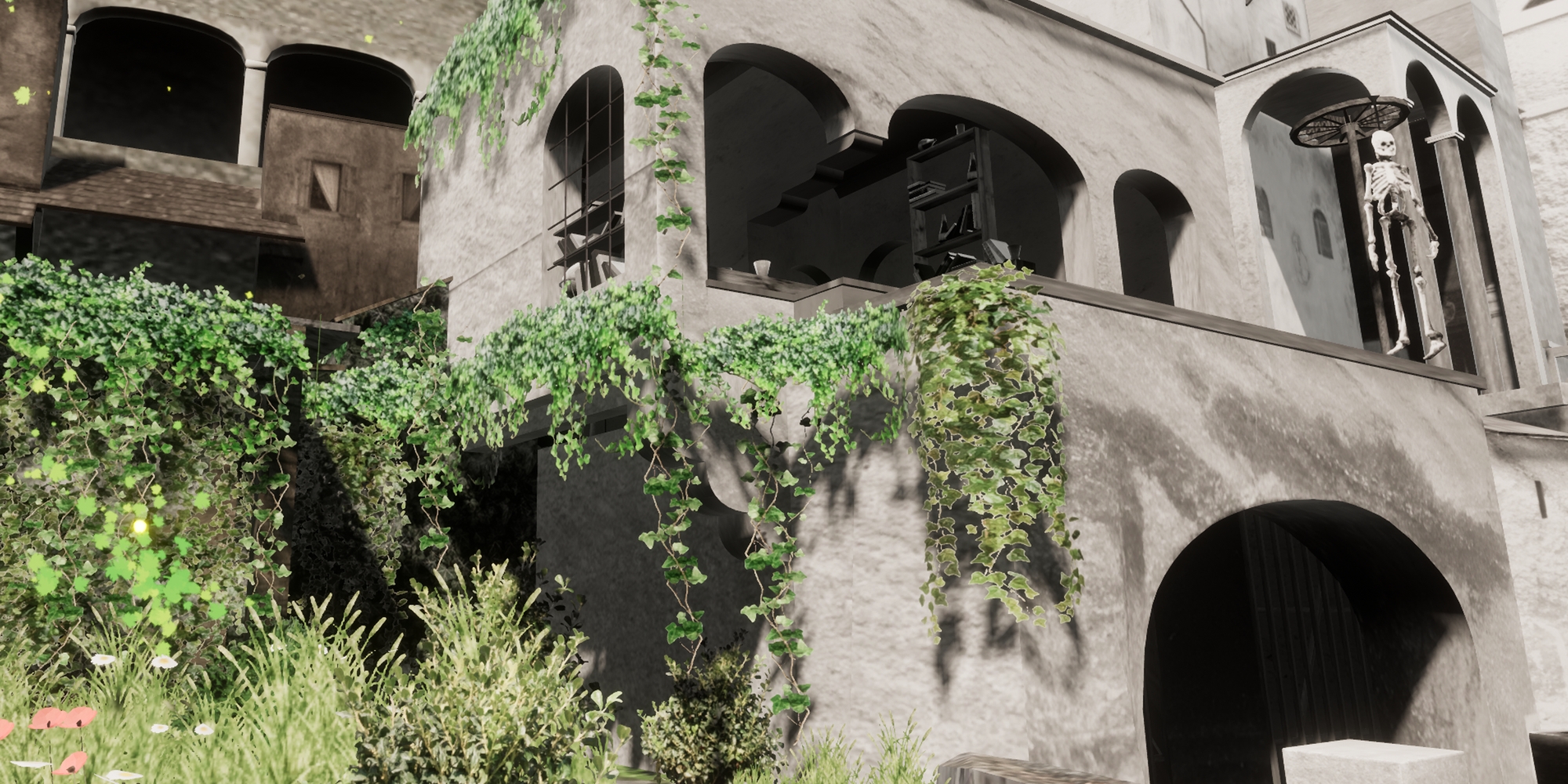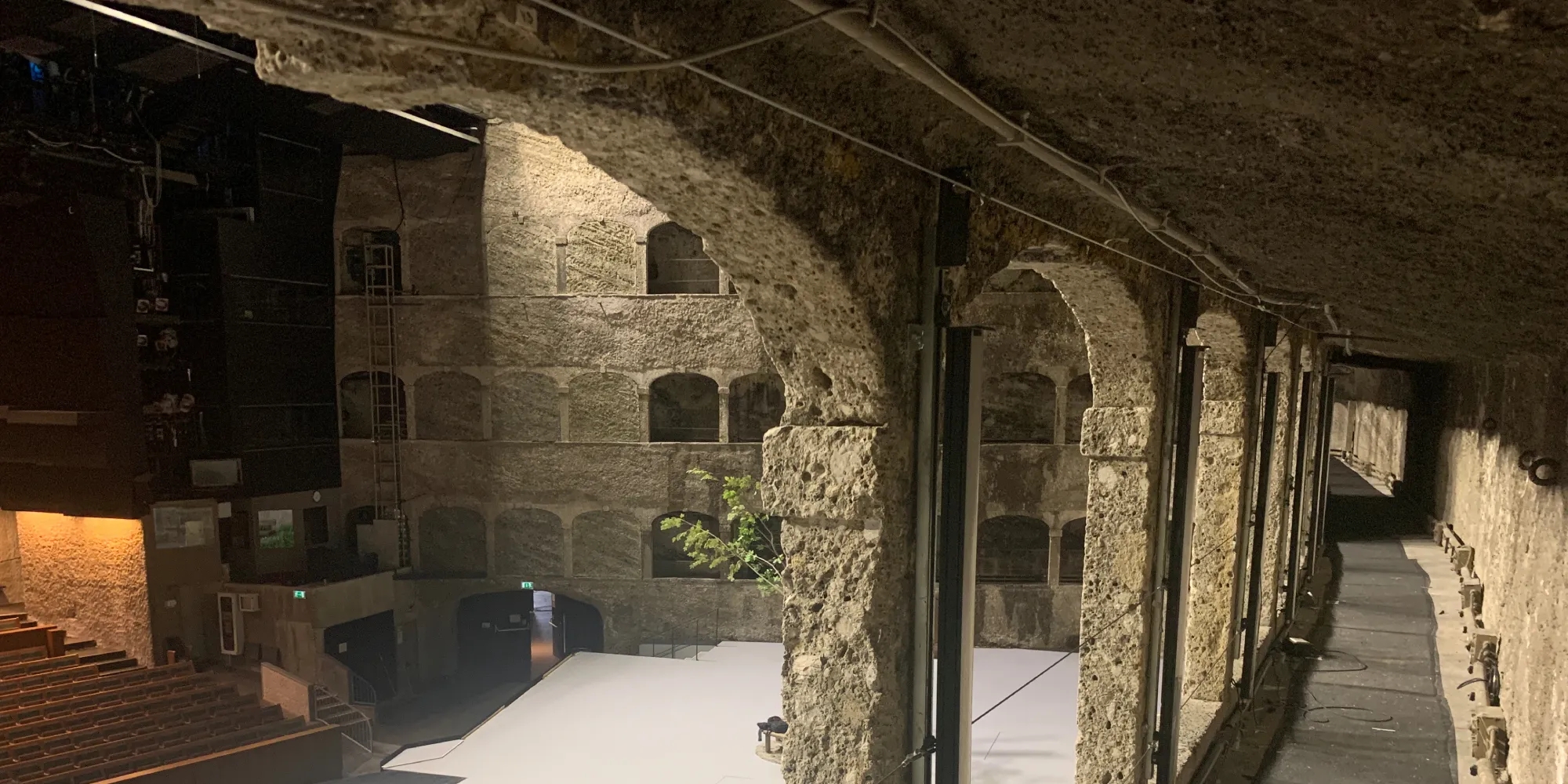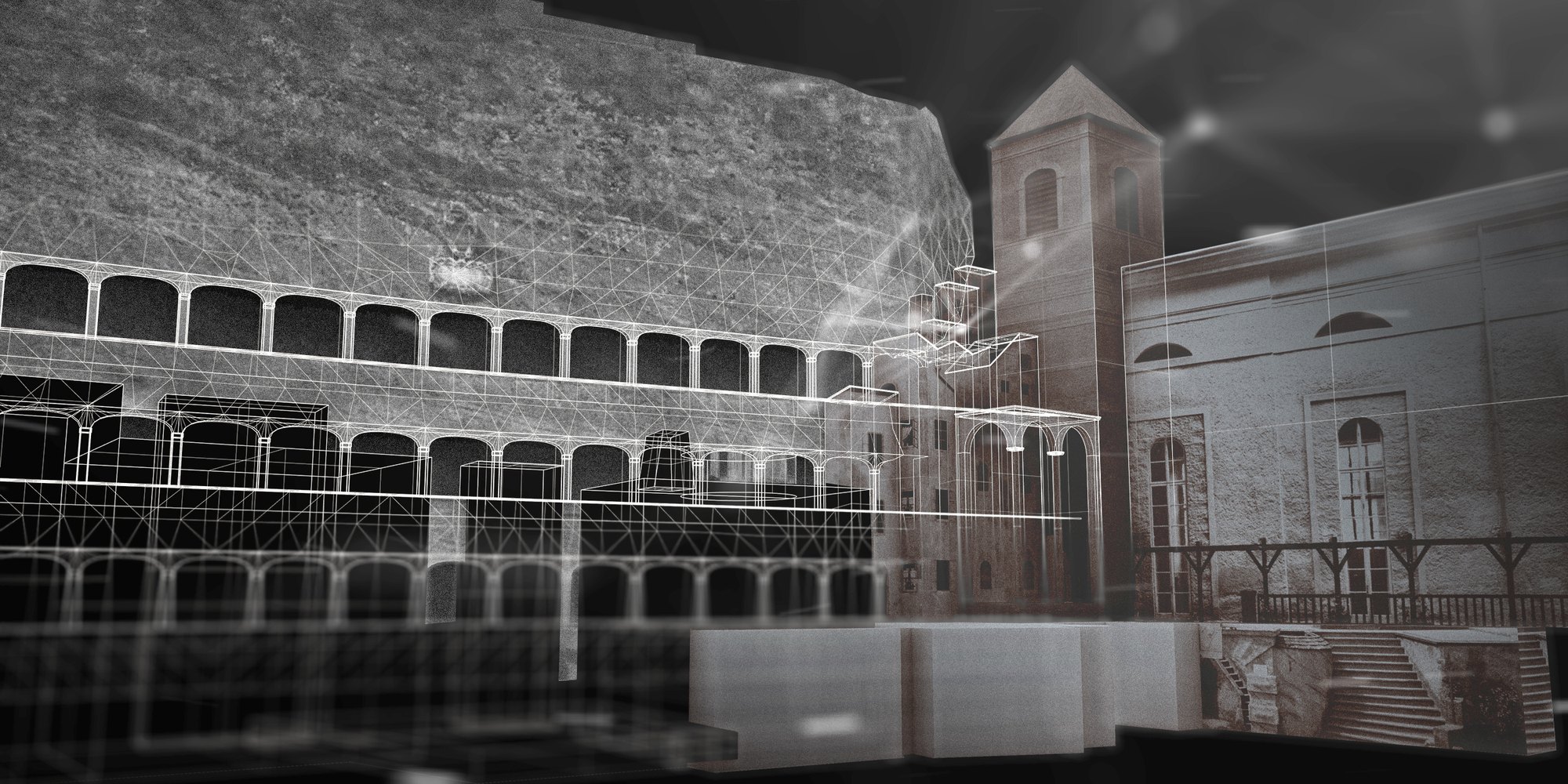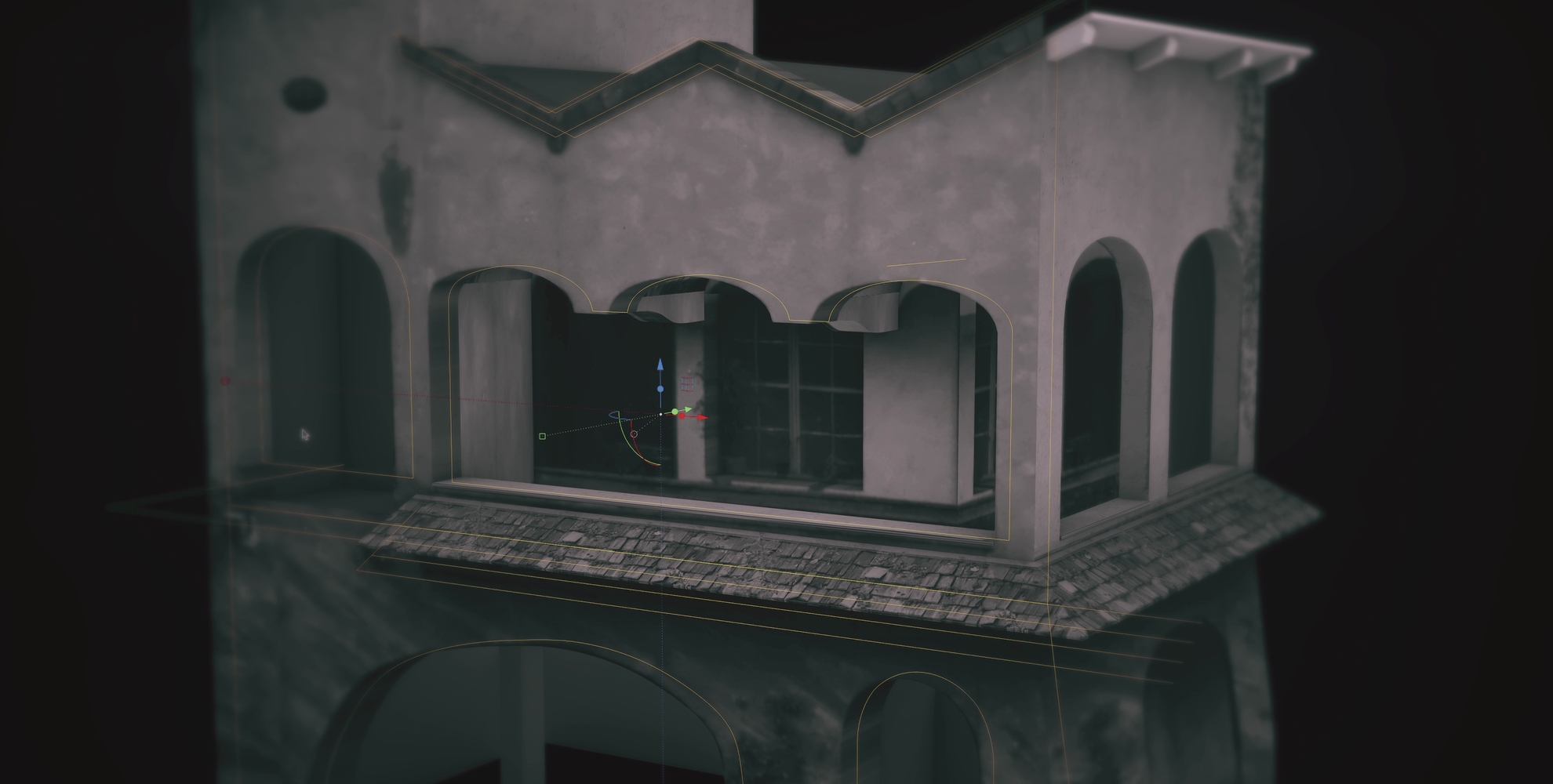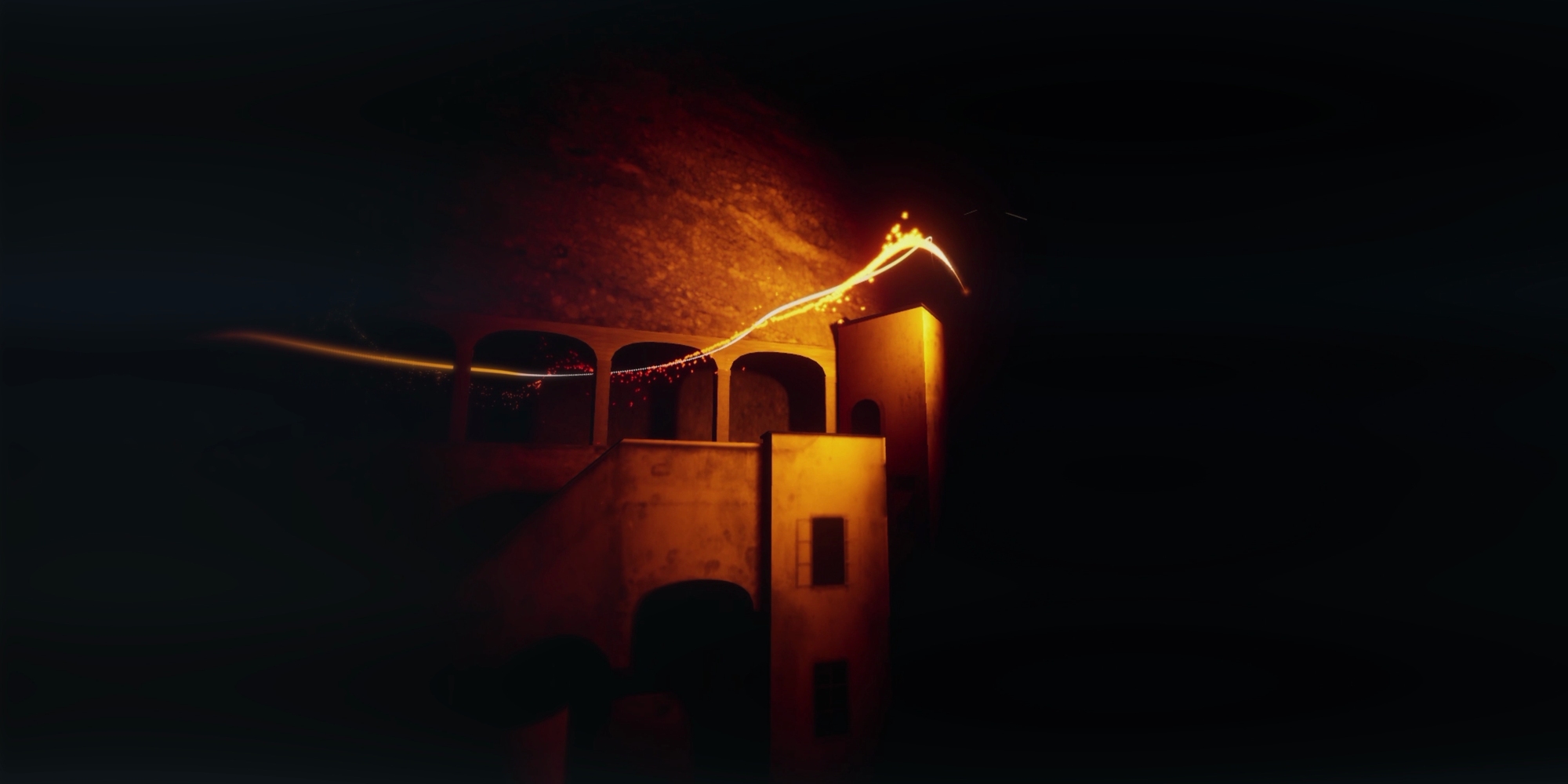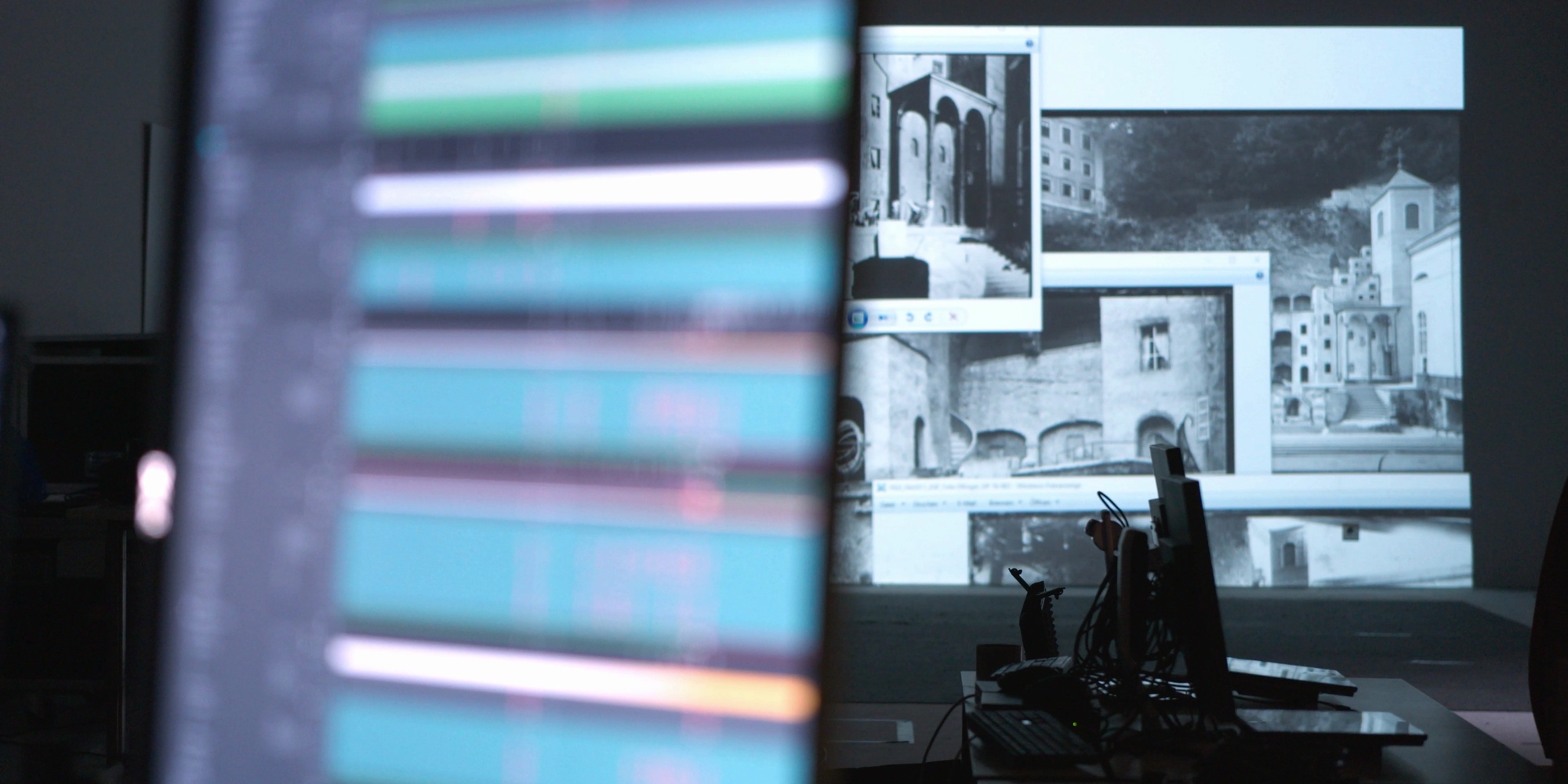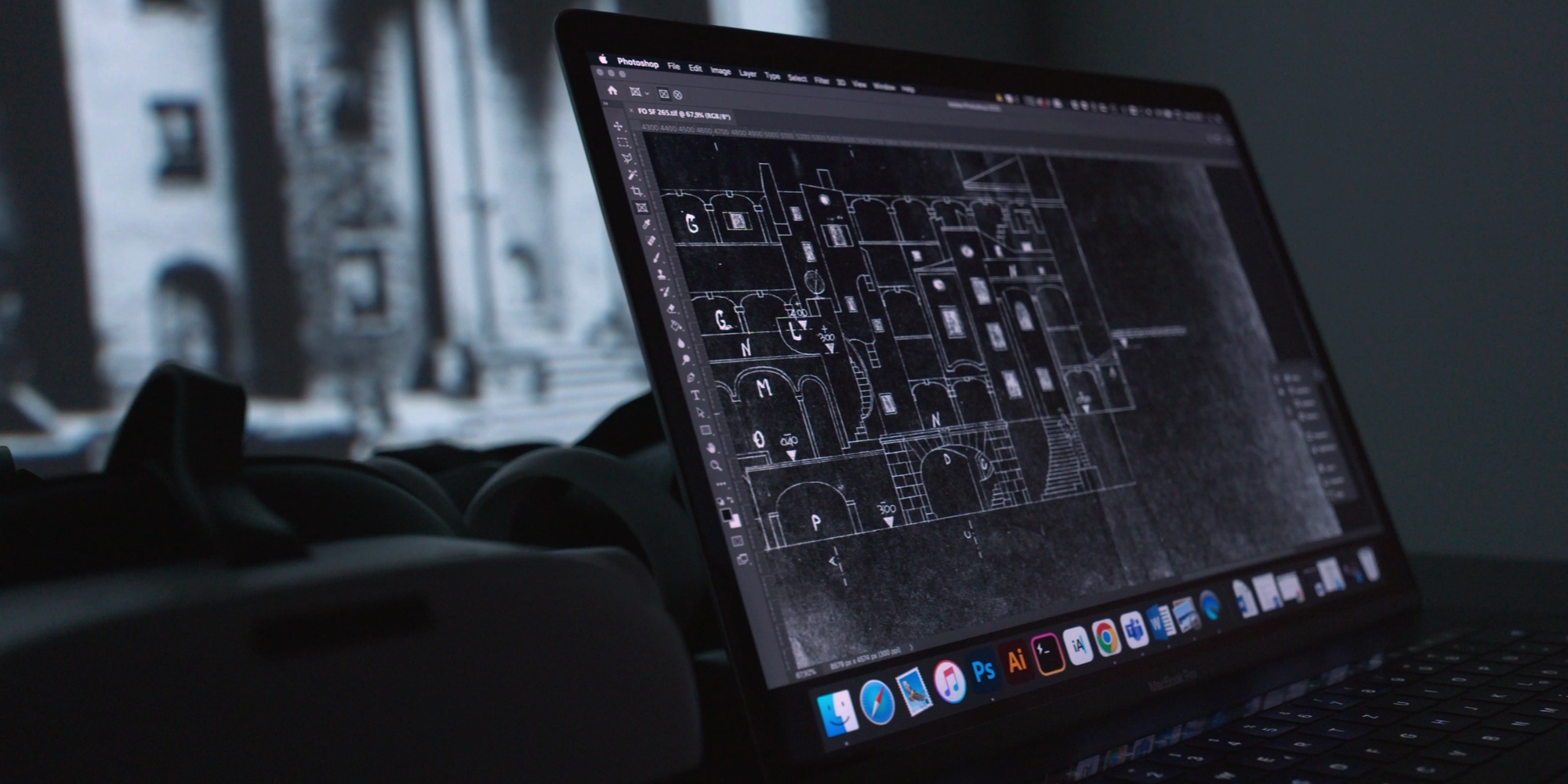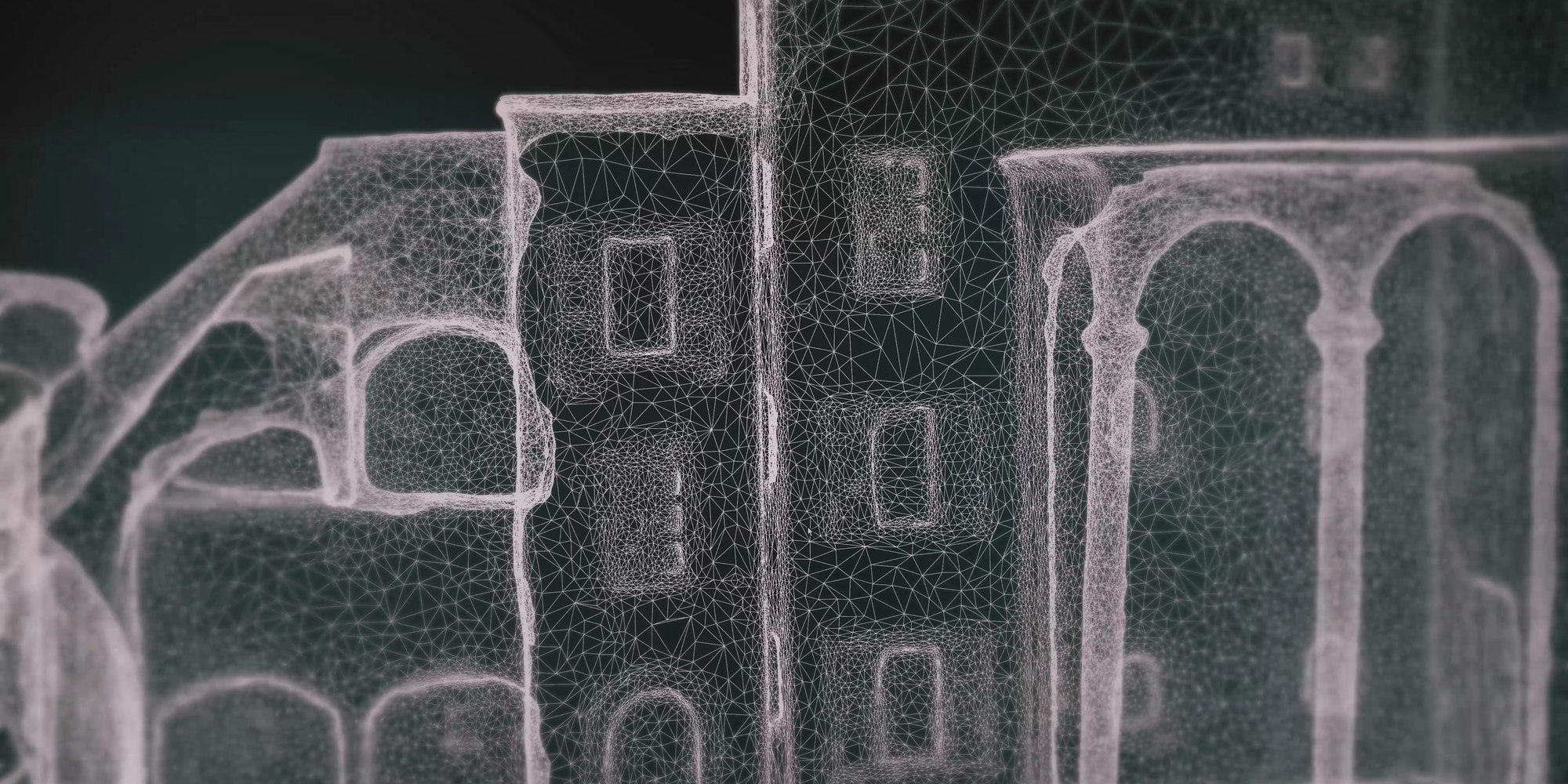In autumn 2023, the theater world celebrated the 150th birthday of Max Reinhardt, one of the most famous German-speaking theater makers of the 20th century. The Salzburg Festival commemorated the theatrical magician by recreating one of his most famous projects: the acclaimed production of Goethe’s “Faust” (1933-1937) at the unique venue Felsenreitschule in Salzburg with “FAUST 2023 – A performative tour”. The Salzburg Festival devised a unique dramaturgy while the Ars Electronica Futurelab created the virtual reality application Faust VR: a unique experience, thanks to an elaborate digital reconstruction of the famous stage set.
The Felsenreitschule was carved into the hill Mönchsberg 330 years ago, based on a design by the Baroque architect Johann Bernhard Fischer von Erlach and commissioned by Archbishop Johann Ernst Thun. Reinhardt’s Faust production stunned audiences in the summer of 1933, with a “Faust town” showcased in and around the many arcades of the Felsenreitschule by architect and set designer Clemens Holzmeister – generating the effect of a stage with multiple levels.
With the Ars Electronica Futurelab project, visitors to the exhibition The Enchanting Reality of Theatre entered a reconstruction of Fauststadt in the Felsenreitschule using VR glasses, directly on stage. They took on unique positions there: between spectators and actors, they traveled through the city designed by Clemens Holzmeister along a ten-minute interpretation of the play. Margarethe Lasinger from the Salzburg Festival had developed a dramaturgy for this purpose that leads visitors to formative elements of the play, at key positions in the virtual stage design of more than 100 years ago.
The reconstruction of the city was being carried out based on plans, recordings and other records from the archives of the Salzburg Festival Fund. A large number of photos were being deskewed in perspective and partly improved with AI support, so the original photos were used as textures on the manually created geometry. In this way, attention to detail to the stage design of the time and the technical limitations of VR glasses were reconciled.
Read more about Faust VR on the Ars Electronica Blog:

Theater magic reimagined: Premiere of „Faust 2023“
Salzburg Festival and Ars Electronica Futurelab invite you to experience Max Reinhardt’s famous „Faust“ in a new way, using VR.
This project was part of the Open Futurelab at the Ars Electronica Festival 2023.
Credits
Ars Electronica Futurelab: Friedrich Bachinger, Patrick Berger, Arno Deutschbauer, Peter Freudling, Roland Haring, Johannes Pöll, Raphael Schaumburg-Lippe
PARTNER: Salzburger Festspiele

